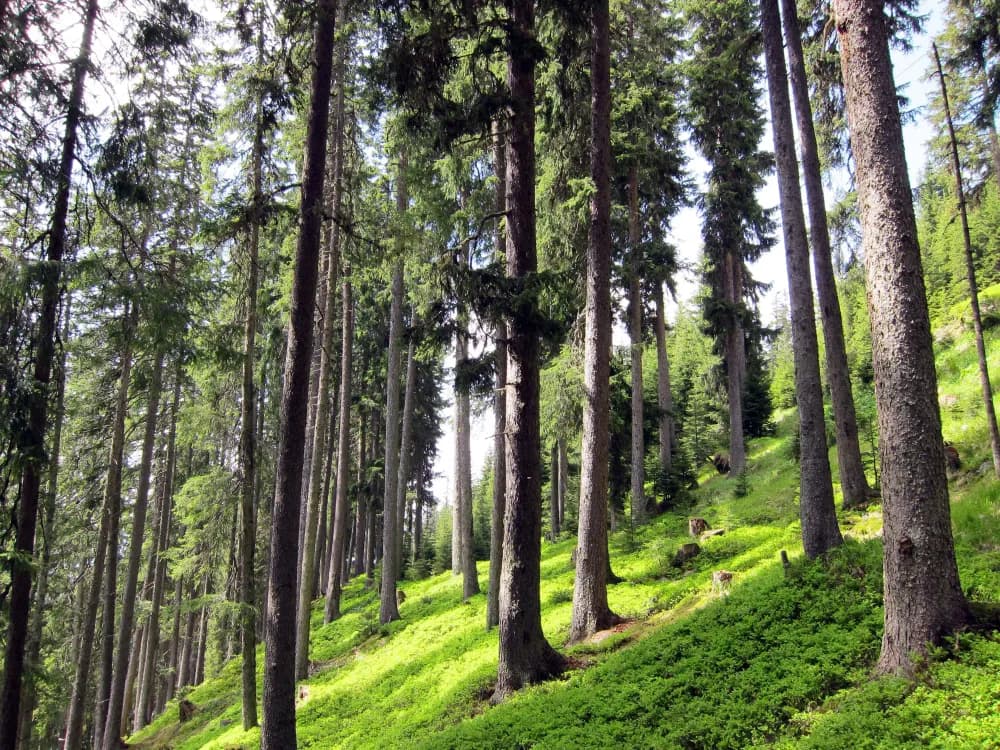Most of the talk around forests and climate change revolves around their potential to capture carbon and offset emissions. Indeed, this is at the core of our own company’s mission. But the fact is these same trees are themselves under threat from climatic transformations already under way. Let’s look at how forests in Europe are changing – and what we can do about it.
New tree species
One sure sign of change is the planting of wholly new types of trees, in anticipation of a warmer climate. Caring for forests is a generational game; in the words of an old Greek proverb, “A society grows great when old men plant trees whose shade they know they shall never sit in.” This has never been more true, and now these ‘old men’ need to give more consideration than ever as to exactly which trees are planted. For example, several Austrian forestry companies are already experimenting with warmer climate species such as Douglas (pseudotsuga spp.), Robinia pseudoacacia, Paulownia spp. etc.
Older trees more vulnerable
Younger trees may benefit from the foresight of their planters, but those already in the ground have no such luck and are the most vulnerable to climatic extremes. “Their water transportation system has to work under greater stress to transport water,” comments a Max Planck Institute report. “As a result, large trees suffer more from drought and are then more susceptible to disease.” Not only this, due to their size older trees are most vulnerable to both storm damage and insect attacks. So while we most often hear about tree planting and reforestation, proforestation – the protection of older growth – has a crucial role to play in carbon sequestration efforts.
Dry periods and fires
When hearing of forest fires, we generally think of far-flung California or Australia. Yet the truth is they’re becoming increasingly common in Europe, as those in Southern Europe can attest to. 2021 was the second-worst year on record, with 1 113 464 ha burning across 39 countries thanks to a lethal combination of drought and high temperatures. If we’re to take full advantage of trees’ CO₂ capture potential, we need to mitigate the risk of fires which undermine such efforts.
Pests
Higher temperatures and droughts in forests create a perfect storm for harmful bark beetle infestations, on the one hand weakening trees’ defences and on the other accelerating the beetles’ breeding cycles. They are multiplying in such exponential numbers that Central Europe’s backbone of spruce forests are under threat; the Czech Republic alone lost the equivalent of 100,000 football fields in 2018.
Thankfully, technologies such as drones and remote sensing are helping foresters prevent and mitigate damage, by detecting the early signs of infestation. But there’s a long way to go in overcoming this tiny yet lethal menace.
Windstorms
Windstorms and all the other mentioned calamities are natural occurrences in forest dynamics and can help regenerate forests and increase [biodiversity](https://www.sciencedirect.com/science/article/pii/S0048969721070480). However, extreme weather events and more exposed forests increase the risk of serious damage. It is not just the wind itself; studies in Switzerland suggested warmer soil temperatures play a part. Wind damage can be mitigated through adaptation strategies and risk minimization, such as forest planning to take into account the most vulnerable trees or stocks.
Conclusion:
If we are to make the most of trees' vast carbon storage potential - which is ultimately our mission at Tree.ly - a timely adaptation and mitigation is essential. As we've explored, many of these changes are part of a forest's natural fluctuations and processes, but they're happening faster than ever before. Thankfully, all the above can be mitigated or prepared for in good time with good forest management and by harnessing the potential of new technologies.



